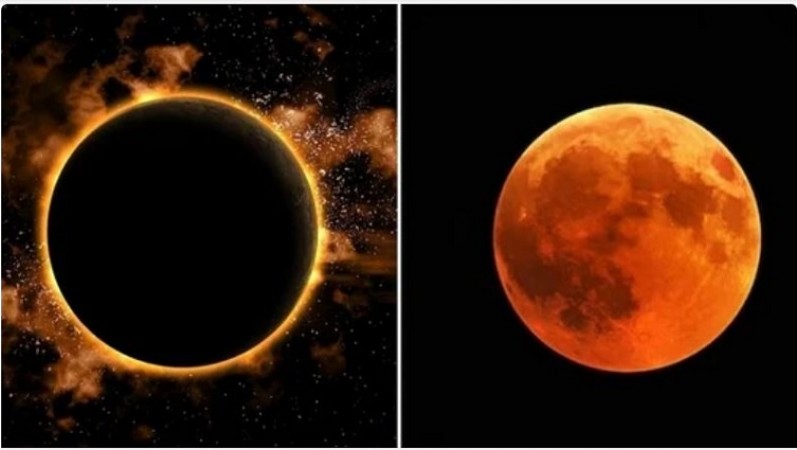
In October, astronomy enthusiasts can look forward to a dual celestial spectacle, featuring a Solar Eclipse on October 14 and a Lunar Eclipse on October 28. On the horizon of October 14, 2023, North America is in for a celestial treat as an annular solar eclipse makes its appearance. This awe-inspiring event promises a visual delight as the Moon passes in front of the Sun, creating a mesmerizing 'ring of fire,' technically termed an annulus. Unlike a total solar eclipse, the Moon's disk won't entirely obscure the radiant face of our star. The eclipse's enchanting journey commences over the eastern Pacific Ocean and gracefully sweeps across the United States, making its way through Oregon, Nevada, Utah, New Mexico, and finally bidding adieu over Texas.
As the celestial ballet continues, this captivating phenomenon ventures beyond the US, crossing the Gulf of Mexico, and gracing the skies of Mexico, Honduras, Belize, and Nicaragua in Central America. This stretch of the eclipse path is where observers will witness the maximum extent of this remarkable event. The celestial voyage doesn't stop there; the eclipse proceeds to South America, passing over Colombo and Brazil, culminating its celestial adventure over Argentina. Regrettably, this celestial spectacle won't be visible from India, but fret not, as interested viewers can tune into livestreams for a front-row seat.
To ensure you don't miss out on this cosmic extravaganza, several esteemed sources are generously offering livestream coverage. Leading the pack is the reputable space news website, Space.com, accompanied by the US National Aeronautics and Space Administration (NASA). TimeandDate, a cherished resource for timekeeping and astronomy enthusiasts, is another excellent option. Educators and learners can tune into Slooh's robotic telescope service, while the Exploratorium public learning library provides yet another platform for eclipse enthusiasts to watch. The live streams are conveniently embedded below, allowing you to select your preferred source and even set up notifications to ensure you don't miss the start of these broadcasts.
For those eager to experience multiple live-streams simultaneously, platforms like YouTube Multiplier and ViewSync can make it possible. As for the timing of these live streams, TimeandDate will commence its broadcast at 20:00 hours IST, with Space.com and NASA following closely at 21:00 hours IST. The Exploratorium's livestream is scheduled for 21:30 hours IST, while Slooh will initiate its live coverage at 23:30 hours IST.
The eclipse itself will be a three-hour spectacle, but the annularity, where the 'ring of fire' is at its most stunning, will last for a brief five minutes. The partial eclipse will begin at 20:33 hours IST, with the full eclipse taking center stage at 21:40 hours IST, and the maximum eclipse casting its spell at 23:29 hours IST. As the clock ticks on, the full eclipse will conclude at 01:19 hours IST, and the eclipse's final moments will be at 02:25 hours IST.
Get ready and set your alarms; October 14, 2023, is your opportunity to witness the beauty of the cosmos. Whether you're an astronomy aficionado or just a curious observer, this annular solar eclipse promises to be a sight to behold, and with these livestreams, you won't miss a moment of this celestial masterpiece.